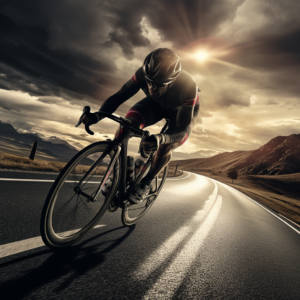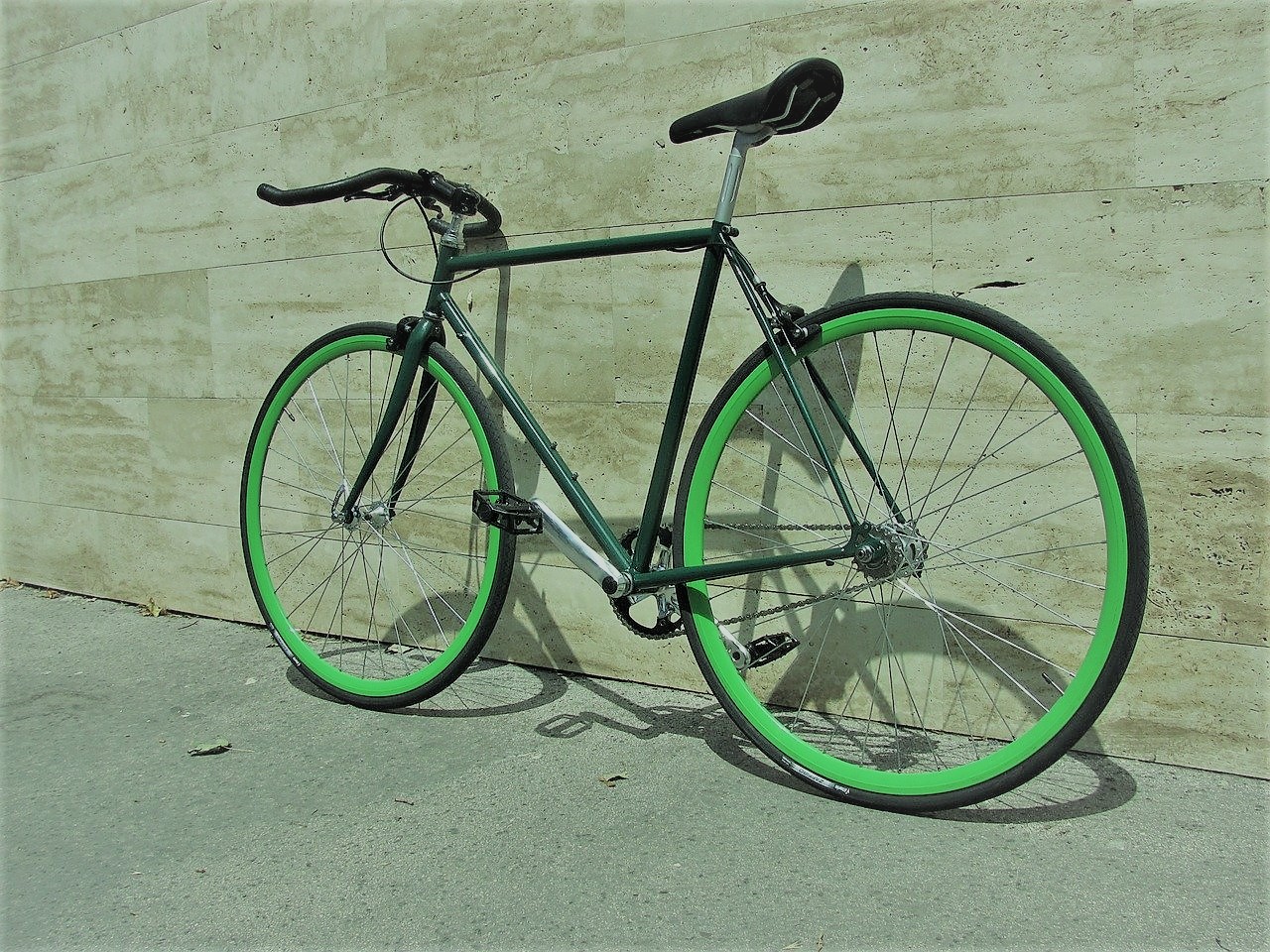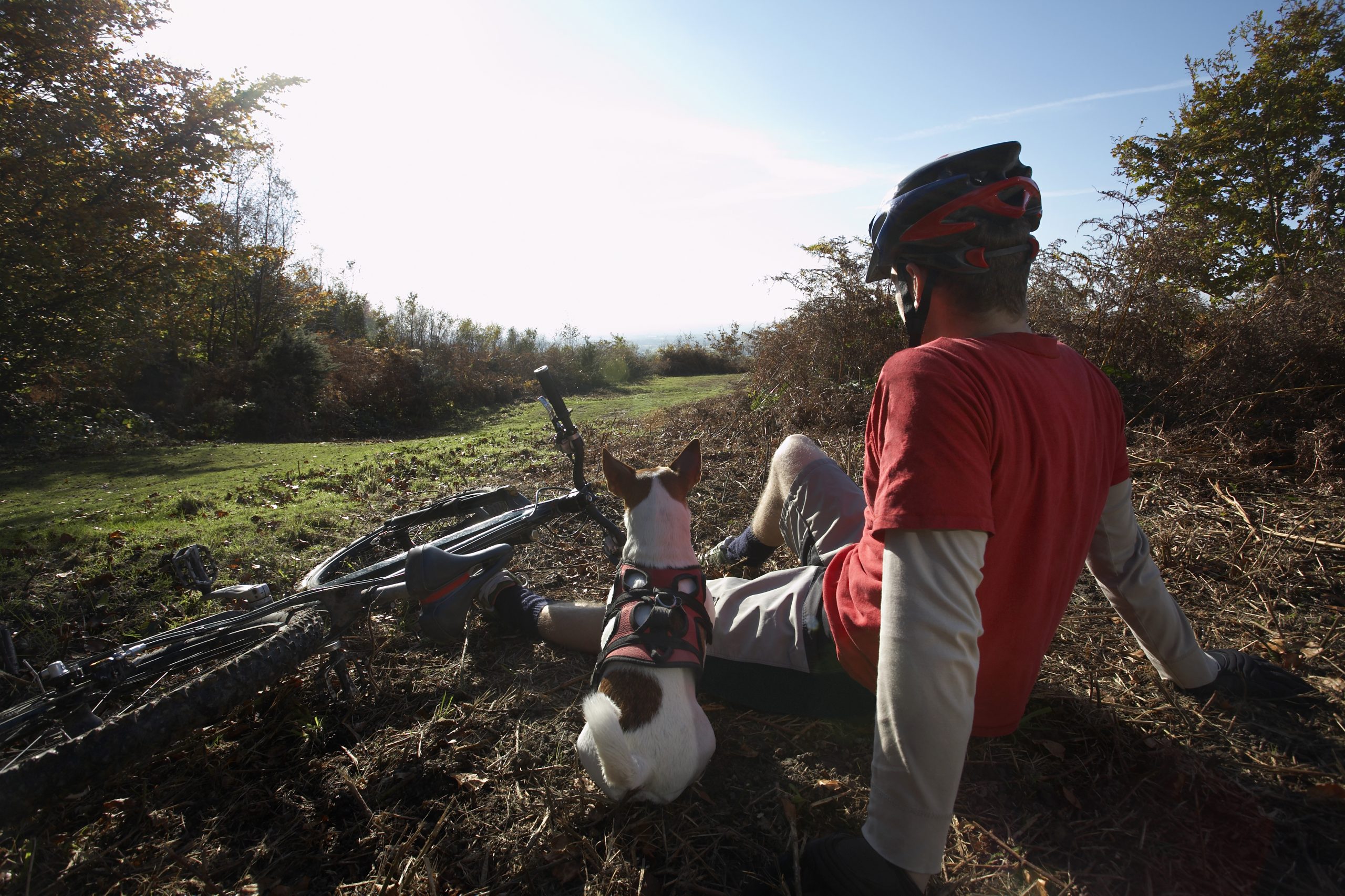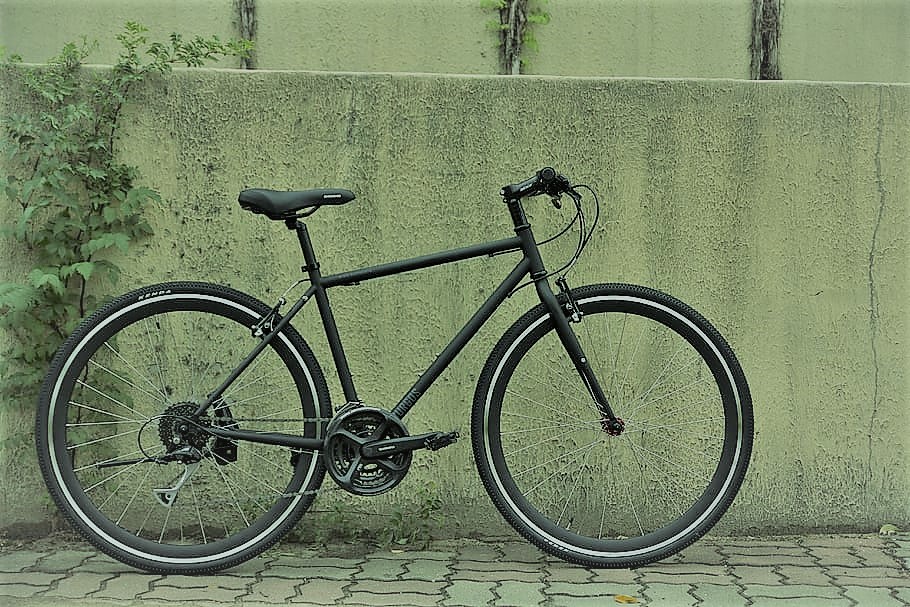The Science Behind Boosting Bike Average Speed
October 3, 2023
133 Views
0
SaveSavedRemoved 0

Table of Contents
Cycling enthusiasts rely on science to play a crucial part in maximizing their performance in their search for better average bike speed. Aerodynamics is a crucial aspect of overcoming air resistance, and it can be accomplished by adopting an effective riding position, enhancing bike design, and choosing the right equipment. A well-maintained bicycle performs at its peak thanks to mechanical effectiveness and diligent bike maintenance, which results in smoother rides and superior torque transfer.
When cycling uphill or downhill, then physics comes into play. By understanding power-to-weight ratios and pacing techniques, riders can efficiently tackle any difficult terrain. Adopting science-based training techniques improves endurance, strength, and speed; interval training is an effective way to improve cardiovascular fitness and muscular efficiency. Also, a balanced diet is essential to reaching peak performance since it supports energy levels and prevents fatigue. Additionally, Nutrition also plays a vital role in this as well.
The science behind boosting bike average speed is multifaceted, encompassing disciplines like aerodynamics, mechanics, physics, physiology, and nutrition. By understanding and applying these scientific principles, cyclists can unleash their full potential and achieve significant improvements in their bike performance. The journey towards faster average bike speed is an ever-evolving one, inviting cyclists to explore the synergy between science and cycling to reach new heights in their riding endeavors.
 Aerodynamics plays a pivotal role in determining average bike speed, presenting a fascinating relationship that can significantly impact a cyclist’s performance. Understanding this connection allows riders to make informed decisions on optimizing their setup for greater speed and efficiency.
Furthermore, aerodynamics is an understanding of how air interacts with moving objects to create resistance known as drag. When riding at faster speeds, air resistance becomes more significant. The posture of the cyclists on the bike has an enormous effect on aerodynamics. Adopting an aerodynamic posture, such as lowering the body closer to the handlebars and tucking the elbows in, for example, minimizes the frontal area exposed to air, thereby reducing drag. Using aerodynamic equipment, like sleek helmets and deep-section wheels, also contributes to the bike’s ability to cut through the air with less resistance.
An illustrative example of the aerodynamics-speed relationship can be seen in time trial races. In these events, cyclists compete individually, aiming to complete a set distance in the shortest time possible. Time trial specialists focus on minimizing aerodynamic drag to gain a competitive edge. They use aerodynamic bikes, clothing, and helmets, and meticulously fine-tune their riding positions to achieve maximum efficiency. By optimizing aerodynamics, cyclists can reduce air resistance, conserve energy, and maintain higher speeds for prolonged periods, resulting in improved average bike speeds and competitive advantage.
Aerodynamics plays a pivotal role in determining average bike speed, presenting a fascinating relationship that can significantly impact a cyclist’s performance. Understanding this connection allows riders to make informed decisions on optimizing their setup for greater speed and efficiency.
Furthermore, aerodynamics is an understanding of how air interacts with moving objects to create resistance known as drag. When riding at faster speeds, air resistance becomes more significant. The posture of the cyclists on the bike has an enormous effect on aerodynamics. Adopting an aerodynamic posture, such as lowering the body closer to the handlebars and tucking the elbows in, for example, minimizes the frontal area exposed to air, thereby reducing drag. Using aerodynamic equipment, like sleek helmets and deep-section wheels, also contributes to the bike’s ability to cut through the air with less resistance.
An illustrative example of the aerodynamics-speed relationship can be seen in time trial races. In these events, cyclists compete individually, aiming to complete a set distance in the shortest time possible. Time trial specialists focus on minimizing aerodynamic drag to gain a competitive edge. They use aerodynamic bikes, clothing, and helmets, and meticulously fine-tune their riding positions to achieve maximum efficiency. By optimizing aerodynamics, cyclists can reduce air resistance, conserve energy, and maintain higher speeds for prolonged periods, resulting in improved average bike speeds and competitive advantage.
 A nutritious diet is vital to improving average cycling speed because it drastically impacts a cyclist’s performance and endurance. During high-intensity effort and longer rides, carbohydrates are the primary source of fuel. Foods high in complex carbs, such as whole grains, fruits, and vegetables, offer cyclists a consistent and sustainable energy supply. A pre-ride lunch of oatmeal topped with fruits and a side of yogurt, for example, may provide the carbs necessary to fuel a cyclist’s morning training session.
Additionally, proteins are essential for muscle repair and recovery, supporting overall performance. Foods like lean meats, fish, eggs, and plant-based protein sources contribute to muscle maintenance and growth. Including protein in post-ride meals, such as a quinoa salad with grilled chicken or tofu, aids in muscle recovery after a challenging ride, preparing cyclists for subsequent training sessions.
Furthermore, healthy fats are critical for delivering sustained energy during endurance rides. Avocados, almonds, and olive oil are high in healthy fats, which help cyclists retain energy levels for extended periods of time. Adding a homemade trail mix with nuts, seeds, and dried fruits, for example, can be an excellent on-the-go snack on lengthy rides, providing plenty of necessary nutrients to sustain energy and boost average bike speed.
Understanding the importance of nutrition and how it affects average speed enables cyclists to make intelligent food choices, adapting their eating habits to complement their riding goals. A well-balanced diet and proper fueling ensure that cyclists can maintain their average speed and overall performance, unlocking their potential for better riding experiences.
A nutritious diet is vital to improving average cycling speed because it drastically impacts a cyclist’s performance and endurance. During high-intensity effort and longer rides, carbohydrates are the primary source of fuel. Foods high in complex carbs, such as whole grains, fruits, and vegetables, offer cyclists a consistent and sustainable energy supply. A pre-ride lunch of oatmeal topped with fruits and a side of yogurt, for example, may provide the carbs necessary to fuel a cyclist’s morning training session.
Additionally, proteins are essential for muscle repair and recovery, supporting overall performance. Foods like lean meats, fish, eggs, and plant-based protein sources contribute to muscle maintenance and growth. Including protein in post-ride meals, such as a quinoa salad with grilled chicken or tofu, aids in muscle recovery after a challenging ride, preparing cyclists for subsequent training sessions.
Furthermore, healthy fats are critical for delivering sustained energy during endurance rides. Avocados, almonds, and olive oil are high in healthy fats, which help cyclists retain energy levels for extended periods of time. Adding a homemade trail mix with nuts, seeds, and dried fruits, for example, can be an excellent on-the-go snack on lengthy rides, providing plenty of necessary nutrients to sustain energy and boost average bike speed.
Understanding the importance of nutrition and how it affects average speed enables cyclists to make intelligent food choices, adapting their eating habits to complement their riding goals. A well-balanced diet and proper fueling ensure that cyclists can maintain their average speed and overall performance, unlocking their potential for better riding experiences.
The Relationship Between Aerodynamics and Average Bike Speed
 Aerodynamics plays a pivotal role in determining average bike speed, presenting a fascinating relationship that can significantly impact a cyclist’s performance. Understanding this connection allows riders to make informed decisions on optimizing their setup for greater speed and efficiency.
Furthermore, aerodynamics is an understanding of how air interacts with moving objects to create resistance known as drag. When riding at faster speeds, air resistance becomes more significant. The posture of the cyclists on the bike has an enormous effect on aerodynamics. Adopting an aerodynamic posture, such as lowering the body closer to the handlebars and tucking the elbows in, for example, minimizes the frontal area exposed to air, thereby reducing drag. Using aerodynamic equipment, like sleek helmets and deep-section wheels, also contributes to the bike’s ability to cut through the air with less resistance.
An illustrative example of the aerodynamics-speed relationship can be seen in time trial races. In these events, cyclists compete individually, aiming to complete a set distance in the shortest time possible. Time trial specialists focus on minimizing aerodynamic drag to gain a competitive edge. They use aerodynamic bikes, clothing, and helmets, and meticulously fine-tune their riding positions to achieve maximum efficiency. By optimizing aerodynamics, cyclists can reduce air resistance, conserve energy, and maintain higher speeds for prolonged periods, resulting in improved average bike speeds and competitive advantage.
Aerodynamics plays a pivotal role in determining average bike speed, presenting a fascinating relationship that can significantly impact a cyclist’s performance. Understanding this connection allows riders to make informed decisions on optimizing their setup for greater speed and efficiency.
Furthermore, aerodynamics is an understanding of how air interacts with moving objects to create resistance known as drag. When riding at faster speeds, air resistance becomes more significant. The posture of the cyclists on the bike has an enormous effect on aerodynamics. Adopting an aerodynamic posture, such as lowering the body closer to the handlebars and tucking the elbows in, for example, minimizes the frontal area exposed to air, thereby reducing drag. Using aerodynamic equipment, like sleek helmets and deep-section wheels, also contributes to the bike’s ability to cut through the air with less resistance.
An illustrative example of the aerodynamics-speed relationship can be seen in time trial races. In these events, cyclists compete individually, aiming to complete a set distance in the shortest time possible. Time trial specialists focus on minimizing aerodynamic drag to gain a competitive edge. They use aerodynamic bikes, clothing, and helmets, and meticulously fine-tune their riding positions to achieve maximum efficiency. By optimizing aerodynamics, cyclists can reduce air resistance, conserve energy, and maintain higher speeds for prolonged periods, resulting in improved average bike speeds and competitive advantage.
Key Factors Influencing Average Speed: Exploring the Variables
When it comes to average bike speed, an array of factors come into play, determining cyclists’ total performance. Understanding these crucial elements enables cyclists to identify areas for growth and tweak their training techniques accordingly. Let’s look at the variables that have a big impact on average bike speed:- Fitness Level: The cyclist’s overall fitness, including cardiovascular endurance, muscular strength, and stamina, directly impacts their ability to maintain higher speeds for extended periods.
- Aerodynamics: The efficiency of the rider’s position, bike design, and equipment in cutting through air resistance affects how smoothly they can ride, thereby affecting their average speed.
- Terrain and Road Conditions: The type of terrain, such as flat, hilly, or rough roads, can significantly affect average speed. Uphill climbs and rough surfaces create additional challenges.
- Wind Conditions: The direction and intensity of wind play a crucial role. Headwinds can slow down cyclists, while tailwinds can offer a speed boost.
- Training and Technique: A well-structured training plan, incorporating interval training, pacing strategies, and efficient pedaling techniques, can lead to improvements in average bike speed.
- Bike and Equipment: The type of bike, its components, and the quality of equipment, such as tires and wheels, impact speed, and overall performance.
- Rider Experience and Skill: Experienced cyclists tend to have better bike handling skills, which can impact speed, especially in technical sections.
- Nutrition and Hydration: Proper fueling and hydration before and during rides contribute to sustained energy levels and optimal performance.
- Weather Conditions: Temperature and humidity can affect a rider’s comfort and performance on the bike, influencing average speed.
- Mental Focus and Strategy: The mental aspect of cycling, including focus, determination, and race strategy, can influence performance and, in turn, average bike speed.
Optimal Bike Speed: Finding the Balance for Maximum Performance
Optimal bike speed involves an intelligent mix of challenging performance limits, maintaining endurance, and admiring the joy of cycling. The pursuit of maximum speed is appealing for competitive cyclists, requiring continuous pacing to preserve energy throughout the race. Professional cyclists maintain speeds of roughly 25-30 miles per hour (40-48 kilometers per hour) in time trial matches to attain peak performance while minimizing fatigue. Endurance cyclists, on the other hand, focus on maintaining a constant speed of 15-20 miles per hour (24-32 kilometers per hour) throughout lengthy rides so as to cover significant miles without depleting themselves prematurely. The right speed, however, takes on an entirely different connotation for recreational cyclists. Their emphasis is on finding a comfortable speed that allows them to enjoy the path, the scenery, and the sheer pleasure of cycling. Regardless of one’s cycling aims, striking this balance is essential for enhancing overall riding pleasure and accomplishing personal cycling goals. Understanding the particular needs of each riding style, personal fitness level, and the impact of terrain and weather conditions enables cyclists to maximize their potential, improve their cycling experience, and uncover the true essence of biking.Bike Speed Techniques: Strategies and Approaches to Enhance Speed
Discover effective strategies and approaches to boost your bike speed in our comprehensive guide on “Bike Speed Techniques.” Learn how to optimize aerodynamics, master efficient pedaling techniques, and implement interval training for improved performance on the road. Enhance your speed and elevate your cycling experience with these proven techniques. Want to know more about bike speed techniques? click here.Bike Speed Comparison: Evaluating Different Bikes and Their Speed Performance
When seeking the ideal bike for speed and efficiency, an extensive assessment of several models is required. Different types of bikes, each designed for a specific purpose, possess various speed capabilities. Road bikes, with their lightweight frames and narrow tires, are intended for speed on smooth terrain, making them perfect for achieving high speeds on pavement, with suggested average speeds for experienced cyclists ranging from 18-25 miles per hour (29-40 kilometers per hour). Mountain bikes, with their solid frames and wide, knobby tires, excel in off-road excursions, providing stability and control in rugged terrains, with suggested average speeds on challenging routes ranging from 10-14 miles per hour (16-22 kilometers per hour). With typical average speeds of 12-18 miles per hour (19-29 kilometers per hour) for a comfortable and enjoyable ride. On the other hand, hybrid bikes, which integrate features of road and mountain cycles, strike a balance between speed and versatility, making them a popular choice for recreational cyclists. Aside from the bicycle itself, components such as gears, wheel size, and frame materials all affect to speed performance. Bikes with higher gear ratios assist cyclists to move faster on flats and descents, while those with lower gear ratios work better on uphill climbs. Additionally, lighter frames made of materials such as carbon fiber or aluminum aid in agility and speed. A thorough bike speed comparison allows riders to make informed decisions based on their riding preferences, topography, and performance goals, ensuring that they find a suitable bike for their cycling efforts and reach their desired speeds with ease.Tips for Measuring Bike Speed: Methods and Devices for Accurate Measurement
Accurately measuring bike speed is essential for tracking progress, analyzing performance, and setting new goals. Several methods and devices are available to cyclists to obtain precise speed measurements during their rides. Here are some popular options: Bike Speedometer: A traditional bike speedometer is a mechanical device mounted on the bike’s handlebars. It uses a small magnet attached to the bike wheel and a sensor on the fork to calculate speed. The speedometer displays the current speed in miles per hour (mph) or kilometers per hour (km/h) on a dial. GPS Bike Computer: A GPS bike computer is a digital device that uses global positioning system (GPS) technology to track speed and other data. It provides real-time speed readings and records the route taken during the ride. Many GPS bike computers also offer additional features like mapping, elevation tracking, and data analysis. Smartphone Apps: There are various smartphone apps available for cyclists that use the phone’s built-in GPS to measure speed. These apps typically offer similar features to dedicated GPS bike computers, and many of them are free or available at a lower cost. Cycling Watches: Some fitness-oriented smartwatches designed for cyclists also include GPS capabilities, allowing riders to track their speed and performance directly from their wrists. Cyclists can effectively measure their bike speed and get useful insights into their performance via these methods and devices, allowing them to make training decisions and consistently improve their riding abilities.Understanding the Role of Nutrition in Average Speed Enhancement
 A nutritious diet is vital to improving average cycling speed because it drastically impacts a cyclist’s performance and endurance. During high-intensity effort and longer rides, carbohydrates are the primary source of fuel. Foods high in complex carbs, such as whole grains, fruits, and vegetables, offer cyclists a consistent and sustainable energy supply. A pre-ride lunch of oatmeal topped with fruits and a side of yogurt, for example, may provide the carbs necessary to fuel a cyclist’s morning training session.
Additionally, proteins are essential for muscle repair and recovery, supporting overall performance. Foods like lean meats, fish, eggs, and plant-based protein sources contribute to muscle maintenance and growth. Including protein in post-ride meals, such as a quinoa salad with grilled chicken or tofu, aids in muscle recovery after a challenging ride, preparing cyclists for subsequent training sessions.
Furthermore, healthy fats are critical for delivering sustained energy during endurance rides. Avocados, almonds, and olive oil are high in healthy fats, which help cyclists retain energy levels for extended periods of time. Adding a homemade trail mix with nuts, seeds, and dried fruits, for example, can be an excellent on-the-go snack on lengthy rides, providing plenty of necessary nutrients to sustain energy and boost average bike speed.
Understanding the importance of nutrition and how it affects average speed enables cyclists to make intelligent food choices, adapting their eating habits to complement their riding goals. A well-balanced diet and proper fueling ensure that cyclists can maintain their average speed and overall performance, unlocking their potential for better riding experiences.
A nutritious diet is vital to improving average cycling speed because it drastically impacts a cyclist’s performance and endurance. During high-intensity effort and longer rides, carbohydrates are the primary source of fuel. Foods high in complex carbs, such as whole grains, fruits, and vegetables, offer cyclists a consistent and sustainable energy supply. A pre-ride lunch of oatmeal topped with fruits and a side of yogurt, for example, may provide the carbs necessary to fuel a cyclist’s morning training session.
Additionally, proteins are essential for muscle repair and recovery, supporting overall performance. Foods like lean meats, fish, eggs, and plant-based protein sources contribute to muscle maintenance and growth. Including protein in post-ride meals, such as a quinoa salad with grilled chicken or tofu, aids in muscle recovery after a challenging ride, preparing cyclists for subsequent training sessions.
Furthermore, healthy fats are critical for delivering sustained energy during endurance rides. Avocados, almonds, and olive oil are high in healthy fats, which help cyclists retain energy levels for extended periods of time. Adding a homemade trail mix with nuts, seeds, and dried fruits, for example, can be an excellent on-the-go snack on lengthy rides, providing plenty of necessary nutrients to sustain energy and boost average bike speed.
Understanding the importance of nutrition and how it affects average speed enables cyclists to make intelligent food choices, adapting their eating habits to complement their riding goals. A well-balanced diet and proper fueling ensure that cyclists can maintain their average speed and overall performance, unlocking their potential for better riding experiences.






